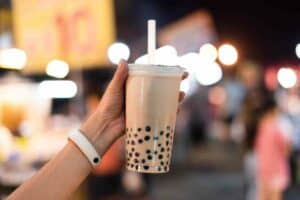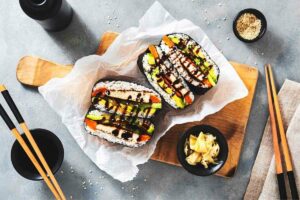If you’re looking for a delicious and healthy way to enjoy your noodles, look no further than yakisoba!
This Japanese dish is made with pan-fried noodles, vegetables, and a savory sauce.
Plus, it’s easy to customize according to your taste preferences.
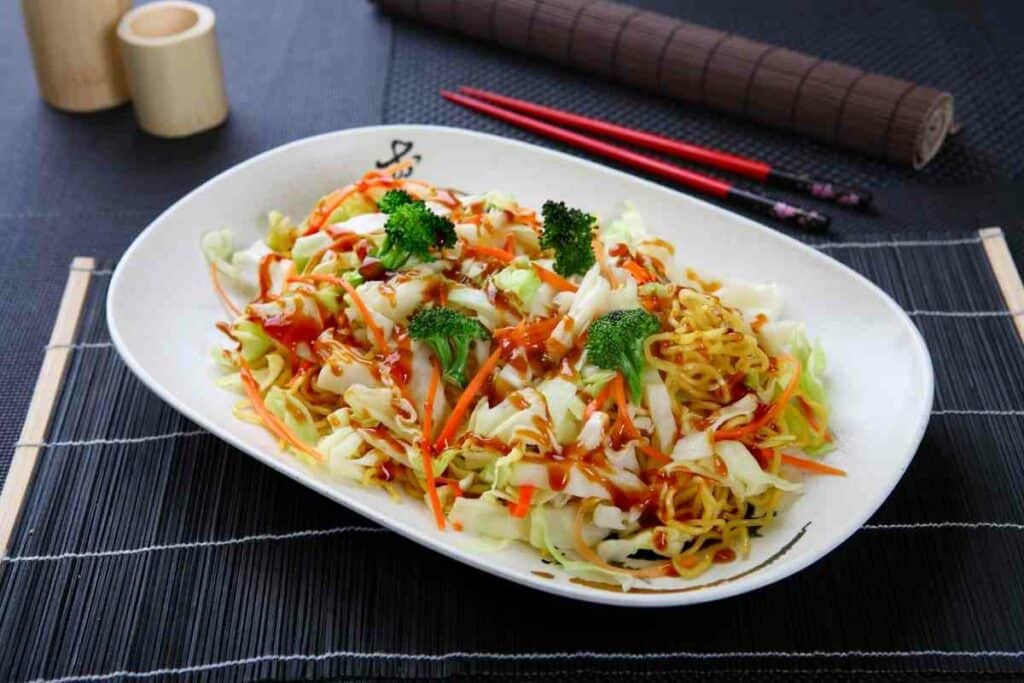
Whether you’re a vegetarian or just looking for some Meatless Monday inspiration, this guide will show you how to make the perfect vegetable yakisoba every time.
Let’s get started!
Table of Contents
What Is Yakisoba
Yakisoba is a Japanese noodle dish that typically consists of wheat flour noodles that are cooked in a savory sauce and then stir-fried with various vegetables and meat.
The word “yakisoba” actually means “fried noodles.” This dish is a popular street food in Japan and can also be found at festivals and other public events.
Yakisoba has its roots in China, where a similar dish called chow mein has been popular for centuries.
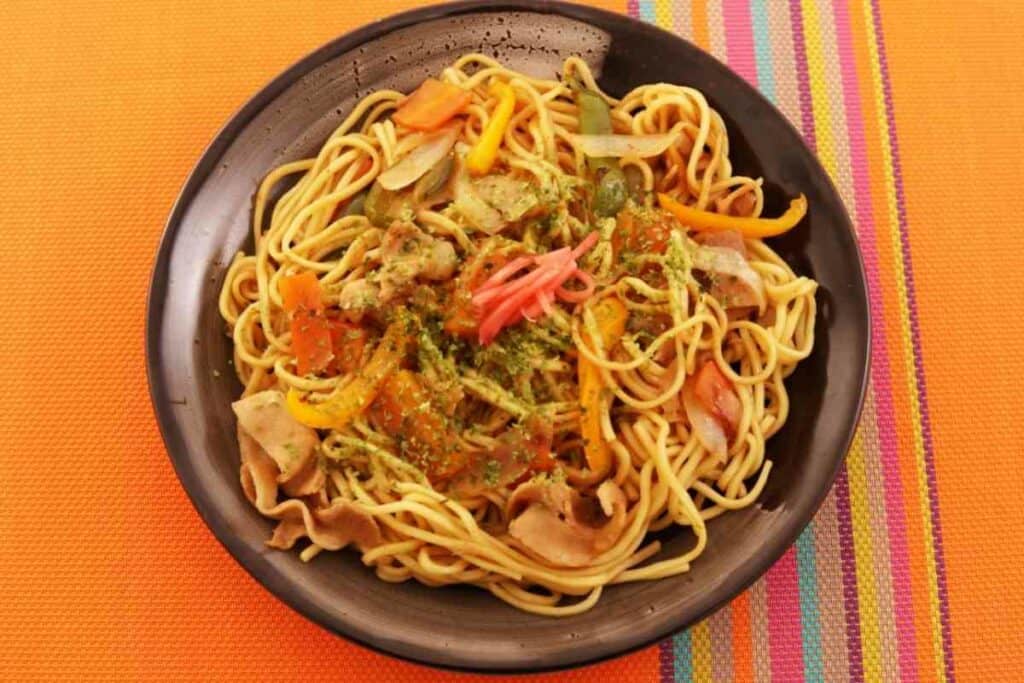
Chow mein made its way to Japan in the 19th century, where it was adapted to suit Japanese tastes and was flavored with Worchestershire sauce.
Japanese yakisoba typically uses thinner noodles than chow mein, and it’s often served with pickled ginger, shredded cabbage, and beni shoga, or pickled red ginger.
These Days – There are endless variations of yakisoba, with different regions of Japan putting their own spin on the dish.
The Ingredients for Vegetable Yakisoba
In this recipe, we’ll be using cabbage, carrots, and mushrooms.
You can, of course, feel free to add or subtract any vegetables you like.
The key to making good yakisoba lies in the sauce.
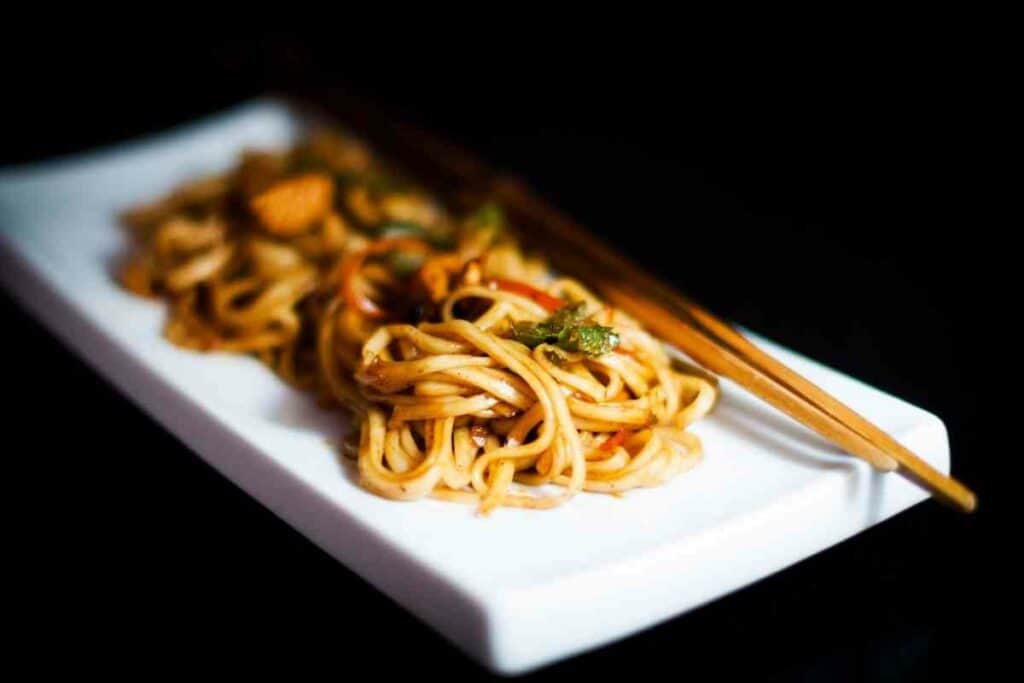
Our sauce is a mixture of soy sauce, Worcestershire sauce, and sugar. This combination may seem strange, but trust us, it works!
Ingredients:
- 1/2 head of cabbage, shredded
- 2 carrots, peeled and grated
- 1/4 lb mushrooms, sliced
- 1/2 bunch green onions, thinly sliced
- 2 tablespoons vegetable oil
- 1/4 cup soy sauce
- 1 tablespoon Worcestershire sauce
- 1 teaspoon sugar
- 1/2 teaspoon salt
- 1/4 teaspoon pepper
- 10 oz yakisoba noodles (or 1 package of ramen noodles)
Toppings:
- Aonori (powdered seaweed)
- Beni shoga (pickled ginger)
How to Make Vegetable Yakisoba
While yakisoba can be found pre-made at many supermarkets in Japan, it’s also relatively easy to make at home.
If you haven’t already chopped and prepared your vegetables, that is your first step.
You can buy vegetables that have already been chopped and sliced at the grocery store, or you can do it yourself.
You can even buy frozen veggies that are already chopped so you can keep some on hand without them going bad!
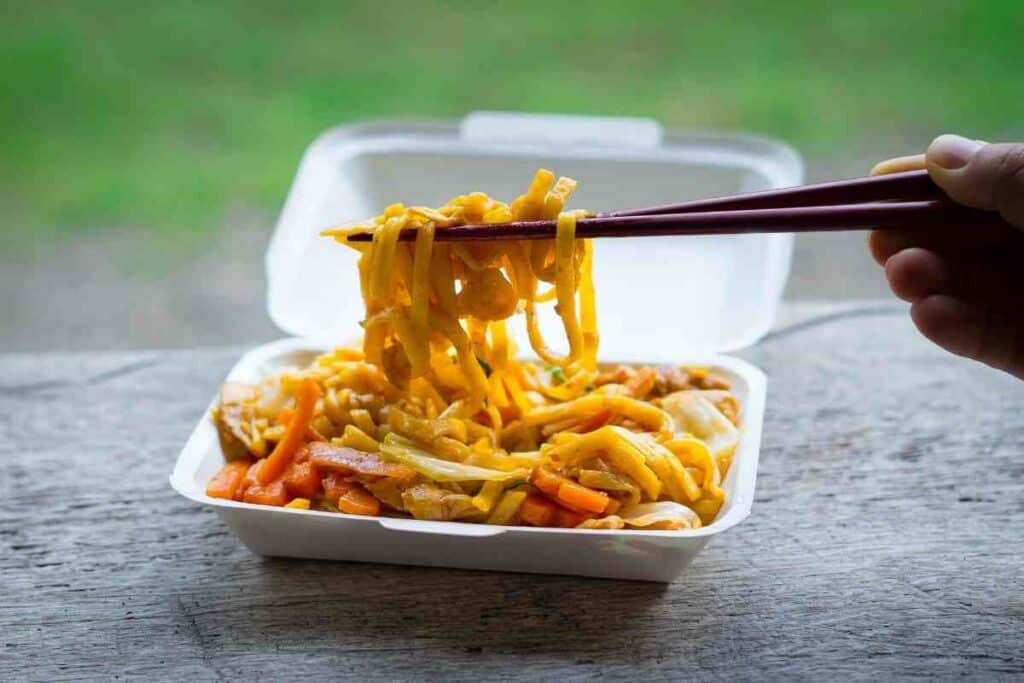
The following stage is to cook the noodles by boiling them. You can also add them to hot water and allow them to rest to cook.
Once the noodles are cooked, drain the water and them to a large pan or wok with all of the vegetables. Cook the noodles and vegetables over medium heat until the vegetables are cooked through and soft.
While that’s cooking, make the sauce in a separate bowl.
Combine the soy sauce, Worcestershire sauce, sugar, salt, and pepper, and add the sauce to the wok.
Continue cooking everything together until the noodles and vegetables are fully coated and the sauce has heated.
Finally – Garnish with aonori (the powdered seaweed) or beni shoga (the pickled ginger) and enjoy!
Vegetarian Worcestershire Sauce Recipe
If you’re making vegetable yakisoba because you’re a vegetarian, you should try to find a Worcestershire sauce substitution that is vegetarian-friendly since most of the store-brand sauces contain anchovies.

If you can’t find a substitute in the store, here is a recipe to make your own vegetarian-friendly Worcestershire sauce.
You’ll need:
- 1 cup malt vinegar (as a alternative you can use apple cider vinegar)
- 1/3 cup soy sauce
- 3 tablespoons brown sugar
- 2 tablespoons molasses
- 1 teaspoon tamarind paste
- 1/2 teaspoon allspice
- 1/2 teaspoon garlic powder
- 1/2 teaspoon onion powder
- 1 pinch of ground cloves
- 1 pinch of black pepper
You will also need a pot, a fine mesh strainer, and a sanitized jar for storing the leftover sauce.
Add all of the ingredients for the Worcestershire sauce to a pot and bring the mixture to a boil.
Once boiling, decrease the temperature and allow the sauce to simmer for ten minutes to bring out the flavors from the spices.
Now you can remove the pot from the heat. Strain the sauce to remove the spices.
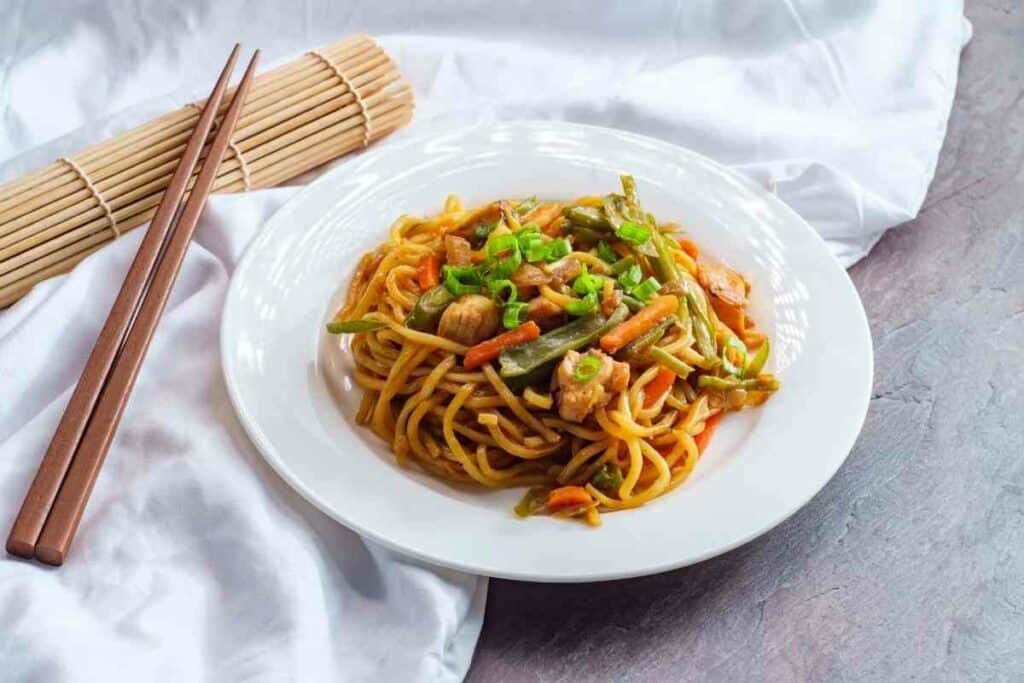
Worcestershire sauce is supposed to have a very smooth finish, and this step will remove any remaining bits of spice that can throw off the texture.
You may have to repeat this step a few times to get the desired result.
Allow the sauce to cool and then transfer it to a jar. The Worcestershire sauce will keep in the fridge for up to six months.
Variations of the Basic Recipe
There are endless possibilities when it comes to making vegetable yakisoba.
By getting creative with your ingredients, you can make this delicious dish your own. Give one of these recipe variations a try if you’re looking to try something new.
Spicy Vegetable Yakisoba
For those who like their meals with a bit of a kick, try adding some sriracha sauce or other hot sauce to your yakisoba.
You can also add some spice by using chili peppers instead of bell peppers.
Yakisoba with Fried Tofu
Fried tofu is a delicious addition to any yakisoba dish.
Simply add some cubed tofu to your stir-fry along with the noodles and vegetables.
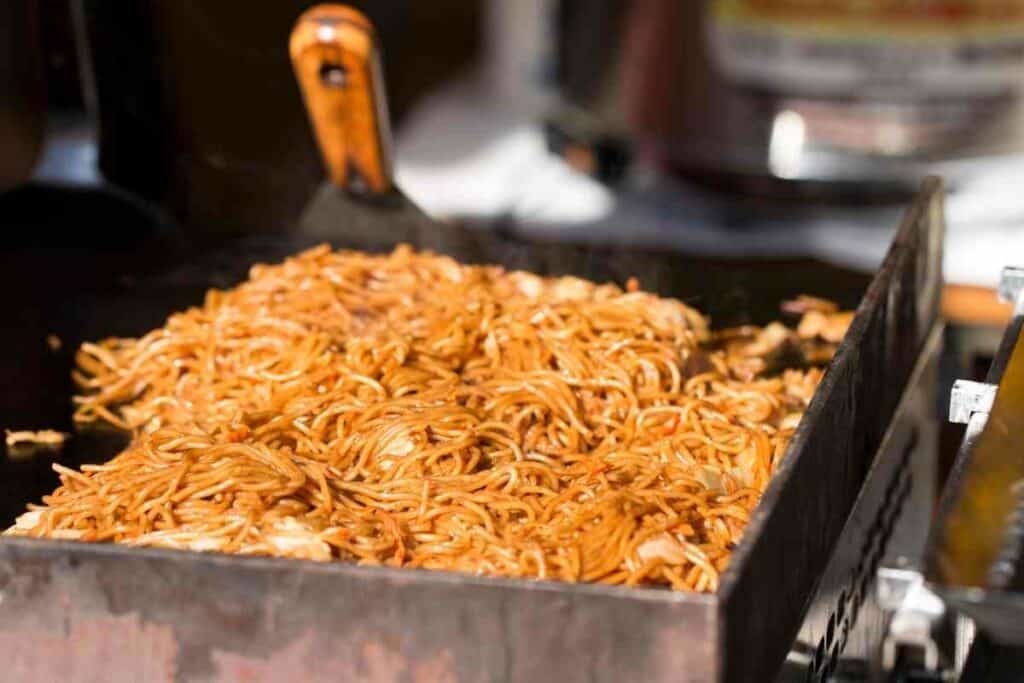
Mushroom Yakisoba
For a heartier dish, add some mushrooms to your vegetable yakisoba.
Though any type of mushroom will work, shiitake mushrooms are particularly good in this dish.
Rainbow Vegetable Yakisoba
This variation is not only tasty but also beautiful to look at!
Use a variety of colorful vegetables such as red bell peppers, yellow squash, and green beans for a stunning and tasty dish.
Peanut Butter Yakisoba
This may sound like an strange combination, but trust us, it works!
Adding a spoonful of peanut butter to your vegetable yakisoba will give it a unique and irresistible flavor.
Tips for Making Perfect Yakisoba Every Time
Making vegetable yakisoba at home is easy and fun! Just follow these simple tips and you’ll have the perfect vegetable yakisoba every time you make it.
Choose the right noodles. When it comes to yakisoba, the type of noodle you use is important.
The best noodles to use are fresh Chinese-style wheat noodles, also known as ramen noodles.
These noodles have a springy texture that can withstand being stir-fried without turning into a mushy mess.
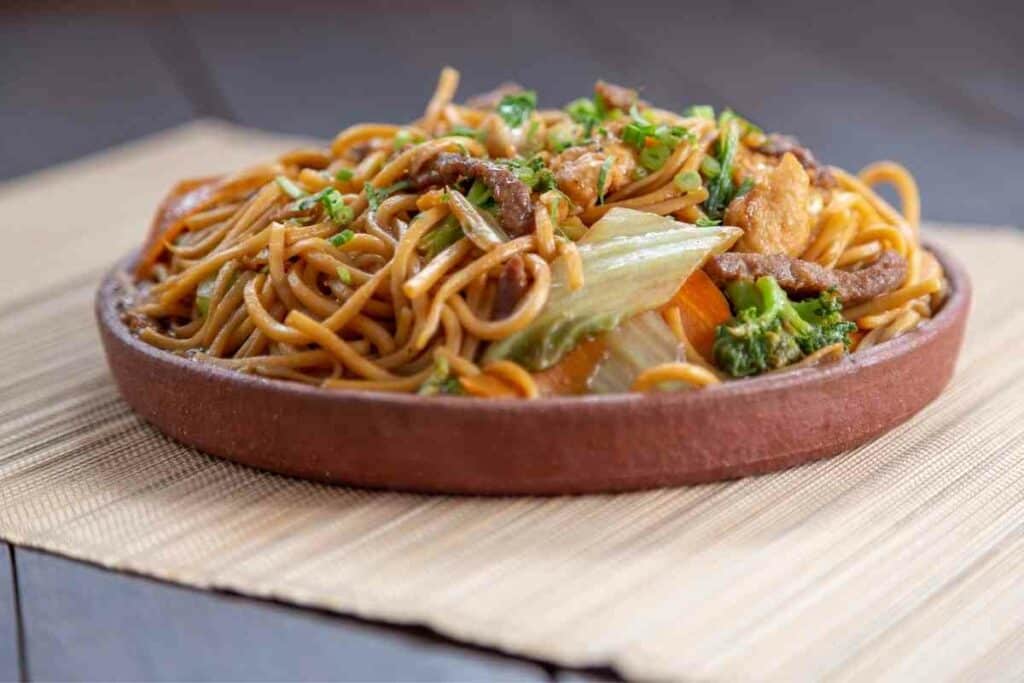
If you can’t find fresh wheat noodles, then you can also use dried ramen noodles.
Use a variety of veggies. Yakisoba is a great way to use up any veggies you have in your fridge.
Traditionally – Yakisoba is made with cabbage, carrots, and onions. Get innovative and add in any other veggies you like, such as bell peppers, mushrooms, or zucchini. Just make sure to cut all of your veggies into uniform pieces so that they cook evenly.
Now is time for the sauce.
The best sauce to use is a mix of Worcestershire sauce, soy sauce, and oyster sauce. If you can’t find oyster sauce, then you can substitute hoisin sauce or even BBQ sauce.
Just make sure to taste your sauce before adding it to the wok so that you can adjust the flavors as needed.
Final Thoughts
Yakisoba is a delicious Japanese noodle dish that’s perfect for a quick lunch or dinner.
It’s easy to make at home with your favorite vegetables, or you can buy it pre-made at many supermarkets in Japan.
Whether you like it traditional or with your twist, vegetable yakisoba is sure to satisfy your hunger!
- Japanese Traditional Sweets (Wagashi): A Guide to Their Origins and Varieties
- A Taste of Japan in Every Bite – Japanese Candy & Snack Box Review
- Bubble Tea vs Boba Compared: What’s the Difference?
- Best Izakaya Foods for a Relaxed Night Out (My Top 10 Picks)
- Edo Kiriko Whiskey Glasses (Japanese Heritage in Every Pour)
- Japanese Viral Foods on Social Media (Discover the Top 10)



